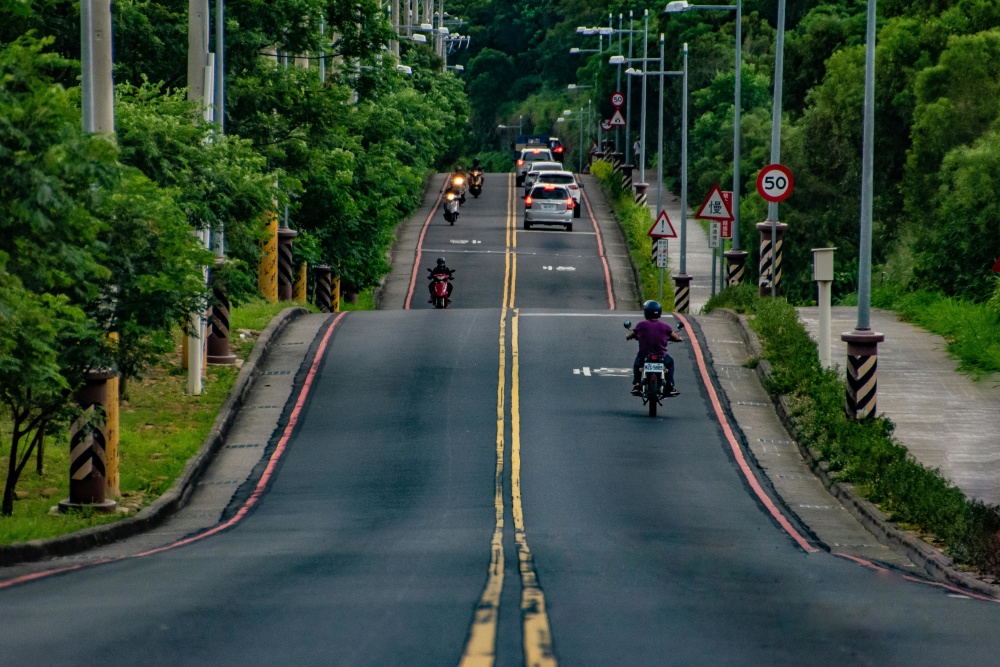Updated August 5, 2024
All About Driving Schools in Japan
As a foreigner living in Japan, you'll probably want to explore the country’s diverse attractions.
While Japan has a great public transportation system, you might start craving the freedom to travel on your own terms, reach remote locations, and make spontaneous stops along the way.
After all, nothing beats the exploration possibilities a car can offer, but if you want to drive in Japan, you’ll need a driver’s license. I already explained the process of getting a driver’s license in Japan in another post. But one common step in getting a license is attending a driving school. That's what I want to focus on in this post.
I will share my top recommendations for driving schools for foreigners and explain the types of driving schools in Japan so you can also do your own research.
First, let’s talk about why attending a driving school in Japan may be the right choice for you.
In this article: 📝
Why Go To A Driving School in Japan?
If you haven’t already gotten a driver’s license in your home country before arriving in Japan, you’ll need to obtain one here. And the best way to learn how to drive and pass the exams is by going to a driver’s school.
This may sound daunting at first, but as I’ll share in a bit, there are great driving schools that teach and provide learning material in English.
While driving schools aren't mandatory to receive a driver’s license in Japan, they offer many advantages.
The curriculum includes more than just driving lessons as it covers everything that’s required for the final test, like first aid, and all lessons are delivered in a structured manner, which speeds up the entire process. Some, in fact, can even help you get your learner’s permit in two to three weeks.
So, without further ado, let’s explore the different types of driving schools out there so you can pick one that suits you.
Commuting to Driving School or Driving School Camps
If you want to learn how to drive and get a driver's license in Japan, you have two options.
The first option is a regular driving school that you can commute to. At these schools, you take classes according to your own schedule and commute from your home and work.
The second option is a bit more extreme but gets the job done faster. I’m talking about the study camps you may have heard of before. Driving study camps are a series of intensive courses you take while staying at a hotel or a dorm room designated by the school.
Study camps usually last about two to three weeks, so if you want fast results, this option is definitely worth considering.
For one, a study camp guarantees that you’ll receive a graduation certificate and obtain your learner’s permit after completing the final driving test. With these two documents, you can take the driving test in a year following your graduation date and get your actual license.
If you choose to commute to a driving school, however, we need to talk about the difference between designated and non-designated driving schools first. This is because the latter does not grant you a graduation certificate.

Designated or Non-Designated Driving Schools: What Are They?
In Japan, driving schools are categorized as designated and non-designated.
Simply put, designated means official. These schools are approved by the Public Safety Commission and can conduct tests and issue certificates on their own.
You can find a list of all designated schools on the Japanese Federation of Authorized Drivers School Associations’ website.
Non-designated driving schools, on the other hand, are more like private tutoring schools, and each has its own methods for teaching the essentials of driving in Japan. Depending on your school, you might not receive all of the courses required to get your license, so before signing up, make sure that non-driving-related classes are also on the curriculum.
Non-designated schools also can’t issue graduation certificates. This is because they aren’t “designated” as official test centers.
The upside of non-designated schools, however, is the flexibility you get in return.
At these schools, you can decide how frequently you take classes and when you want to finish your course. You can speed things up and get your learner’s permit ASAP or slow things down if you don’t feel as ready.
As you take classes at a non-designated driving school, you’ll have to oversee your exam schedule and take the necessary tests at an official test center. Paying for the test fees yourself is partially why non-designated schools offer more affordable prices.
Another reason they’re cheaper is that non-designated driving classes usually take less time to complete, but you can customize this according to your liking and learning pace.
Top Japanese Driving Schools for Foreigners: Tokyo Driving Schools
Most Japanese driving schools are pretty accommodating to foreign beginners. In fact, considering the high population of foreign residents living in Tokyo, the busy Metropolis might be the best place in terms of the sheer number of options.
Here are a few of the best-rated driving schools in Tokyo.

Koyama Driving School
Koyama Driving School is mainly based in Tokyo, with four branches in the city and another one in Yokohama.
This is a designated driving school, which means you can take an exam held by the school and receive a graduation certificate at the end of your program. They have a fully English website you can check out for detailed information, and all teaching staff speak English.
In addition to driving courses, Koyama Driving School also handles foreign driver’s license conversion at affordable prices.
Koyama Driving School provides training for all types of vehicles, including special heavy equipment/machinery. They have two locations in the Setagaya ward, one in the Nerima ward, and another one in Higashimuramaya City, providing accessible options to everyone. So if you’re living in Tokyo, this is one of the best schools you can go to.
EDS - International Driving School
EDS, or International Driving School, is a non-designated driving school, meaning you’ll have to go to exam centers to take your tests and exams. However, this isn’t a big deal, as EDS is the most foreigner-friendly driving school out there.
EDS offers two types of driving course programs. One is called “challenger” and, as the name suggests, is for those who believe they can learn everything quickly and ace the test in no time. This program is specifically for experienced and confident drivers, so it’s not suitable for beginners.
The other program, called “recommended”, is a much safer choice. This takes you from the beginner stage and teaches you everything you need to know to get your license.
In addition to these, there are also fully customizable programs and ones that only include driving courses. So, you can also just pick the classes you truly need. The school also handles existing driver’s license conversions, which is something to keep in mind.
Bonus: Tokyo Driving School (Private Driving Lessons Japan)
If you’re looking for a more personalized option, Tokyo Driving School offers just that. Here, you can take private lessons, and all the training staff speak English.
You can take theory classes separately, get only driving lessons, or purchase the full package that takes you from a beginner to a driver’s license holder.
Despite being a non-designated driving school, Tokyo Driving School’s hands-on approach is a breeze. In fact, they even offer to assist you at the exam center, help you fill out forms, and handle formalities you’re not equipped to deal with as a non-Japanese speaker.
Osaka Driving Schools for Foreigners: Foreigners Driving in Japan
Osaka is another large city in Japan with plenty of foreigner-friendly driving schools due to the many foreign residents living here. Let’s talk about the top two schools in the city.
Ashihara Driving School
Offering cutting-edge technology that’s not available in most schools, the training vehicles of Ashihara Driving School are loaded with custom tech that makes driving training easier and more efficient.
This is a designated school, meaning they conduct the exams and provide you with a graduation certificate at the end of your training. Of course, there are English-speaking teaching staff and you can also take the exam in English.
The school has separate programs for automatic and manual stick-shift cars, and you can easily apply online to sign up for one of their programs. The school is suitable for absolute beginners and even provides driving lessons to the elderly.
Ashihara Driving School is located in the Naniwa ward and is a five-minute walk from the south exit of the JR Loop Line Ashiharabashi Station.

Minato Driving School
Minato Driving School may be a non-designated school, but it makes up for it with several advantages.
For one, the school provides weekend classes and is open until 9 PM on weekdays, which is great for busy professionals. And for those who want their license quickly, Minato Driving School has programs you can finish in just two weeks. They allow you to take your time if you need it as well, as the programs are very flexible.
Another advantage is the school buses operating in various areas of the city, picking you up and dropping you off at various locations so you can easily attend classes. There’s even a shuttle bus you can take from the Bentacho station, which is the nearest train station, and this service is even available to those coming to sign up for the first time.
One of the best things about Minato Driving School is its flexibility. You can pick out a graduation date, and they can create a schedule for you. It’s even possible to graduate in just 14 days for automatic vehicles and 16 days for stick-shift vehicles, making this a comparable experience to a driving school camp, but you get to commute from your home instead.
Learn To Drive Japan: The Best Fukuoka Driving School for Foreigners
Being a startup city, Fukuoka has been a destination for tech professionals for a while now. Naturally, the city is no short of foreigner-friendly driving schools. Let’s take a look.
Minami Fukuoka Driver’s School
Minami Fukuoka Driver’s School prides itself on “having a fun, relaxed attitude”, and the company also provides foreign residents in Fukuoka with English-speaking driving lessons.
The company provides all learning materials in English so you can study on your own time, and they have fast-track programs that can get you ready in a couple of weeks. The school provides online lessons, so you can take the theoretical classes in the comfort of your own home.
You can get driver’s courses for motorcycles and cars, and there are even discounts for students, which is something to keep in mind.
As this is a designated course, you can take your exams here. They hold the final exams and the graduation exams three days a week.
Minami Fukuoka Driver’s School is located in Onojo City, Fukuoka.
Meinohama Driving School
Located in the central Nishi ward, Meinohama Driving School is a popular, non-designated driving school.
The school is open on weeknights and weekends, making it a perfect choice for professionals. There’s even a free childcare facility here, so you can bring your kids to practice and classes.
Meinohama Driving School teaches driving using some of the most popular cars and a Harley motorcycle for those training for a motorcycle license.
Due to its central location, getting here is easy, but the school also provides a free shuttle bus service. The shuttles run through the whole city, covering a large area.
While the staff may not always speak English perfectly, the school makes sure to provide you with fully English books and other teaching materials to ensure you don’t miss a thing.
With a large study room and even a nice cafe to hang out, this is easily one of the nicer places on our list. You can also come here for practice even after finishing your program, which takes about 2 to 3 months for a car license, and two to three weeks for a motorcycle license.
Conclusion and Tips for Finding Driving Schools on Your Own
To sum up, if you want a surefire way to get your license and do it fast, I recommend signing up for a driving school camp where you can get your graduation certificate and learner’s permit in 2 to 3 weeks.
You can also go with a non-designated school to speed things up, but you’ll have to take each test on your own, paying for all the fees yourself. This can easily be a more relaxed option as you can choose the course’s length.
All of the schools I introduced in this post are great, but if you’re living in the Japanese countryside, the inaka, you may have to search for schools in your area on your own. Let’s look at a few keywords you can use.
For designated driving schools, you can search for “指定自動車教習所.” If you’re looking for non-designated schools, look up “特定届出教習所” with your city’s name and you’ll get driving schools that have all the mandatory courses in their curriculum.
With this, you now know all the basics of Japanese driving schools, but if you already have a driver’s license outside of Japan and want to convert it, refer to my driver’s license guide.
Get Job Alerts
Sign up for our newsletter to get hand-picked tech jobs in Japan – straight to your inbox.







